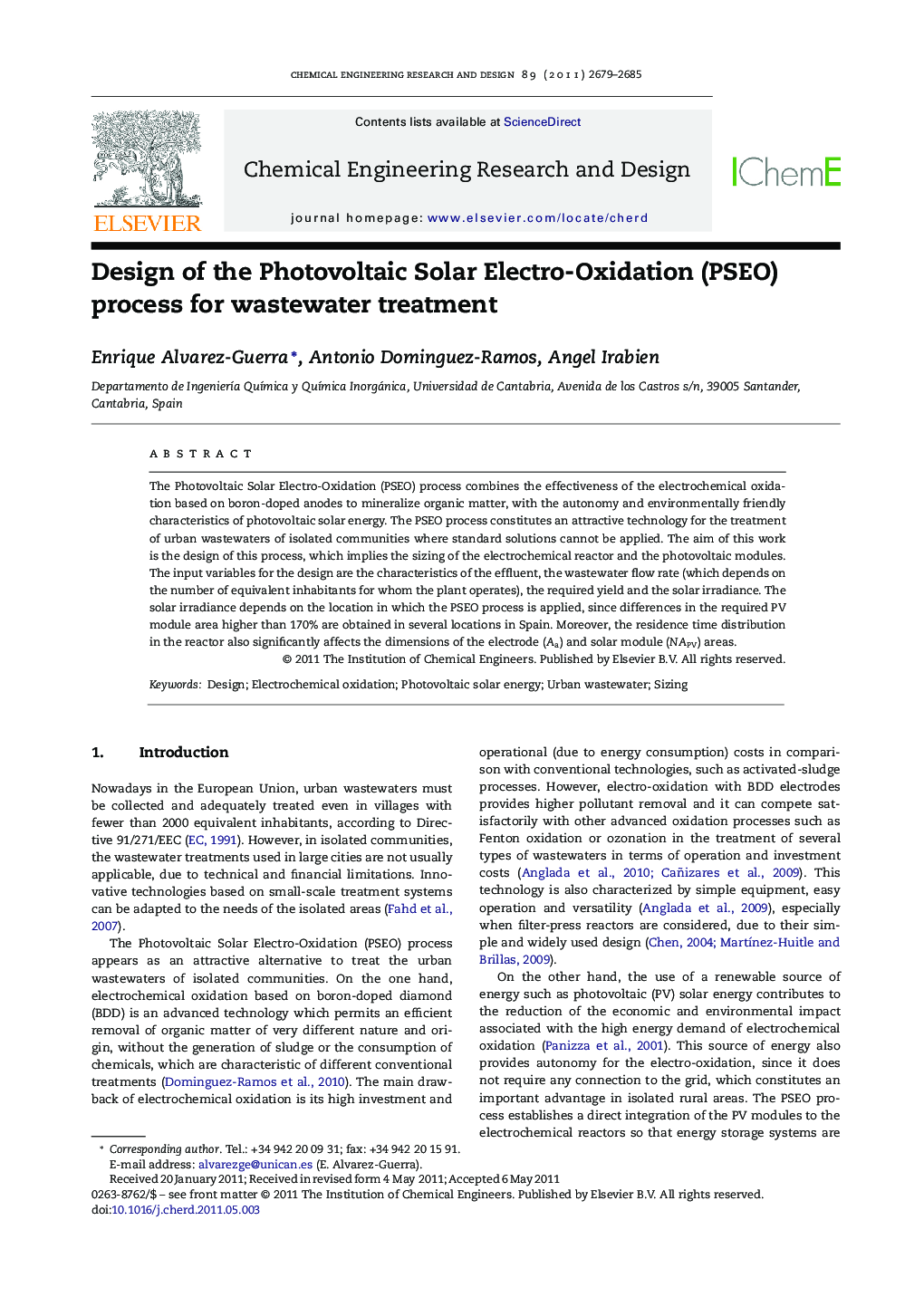| Article ID | Journal | Published Year | Pages | File Type |
|---|---|---|---|---|
| 621944 | Chemical Engineering Research and Design | 2011 | 7 Pages |
The Photovoltaic Solar Electro-Oxidation (PSEO) process combines the effectiveness of the electrochemical oxidation based on boron-doped anodes to mineralize organic matter, with the autonomy and environmentally friendly characteristics of photovoltaic solar energy. The PSEO process constitutes an attractive technology for the treatment of urban wastewaters of isolated communities where standard solutions cannot be applied. The aim of this work is the design of this process, which implies the sizing of the electrochemical reactor and the photovoltaic modules. The input variables for the design are the characteristics of the effluent, the wastewater flow rate (which depends on the number of equivalent inhabitants for whom the plant operates), the required yield and the solar irradiance. The solar irradiance depends on the location in which the PSEO process is applied, since differences in the required PV module area higher than 170% are obtained in several locations in Spain. Moreover, the residence time distribution in the reactor also significantly affects the dimensions of the electrode (Aa) and solar module (NAPV) areas.
► Photovoltaic Solar Electro Oxidation (PSEO) is an innovative self-sustainable wastewater treatment. ► Electrode area and photovoltaic module area are the main design variables in the integrated process. ► Solar irradiation, wastewater flow rate and pollutant concentration are the main process variables. ► Improving treatment efficiency severely increases the size of the required PSEO installation. ► For a given electrode area, solar irradiation leads to differences up to 170% in PV module area.
